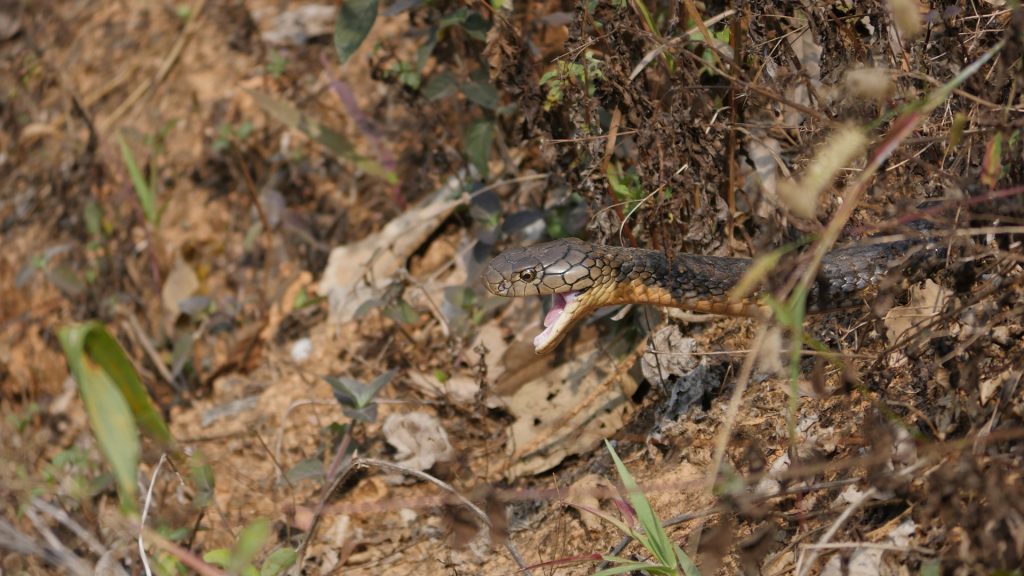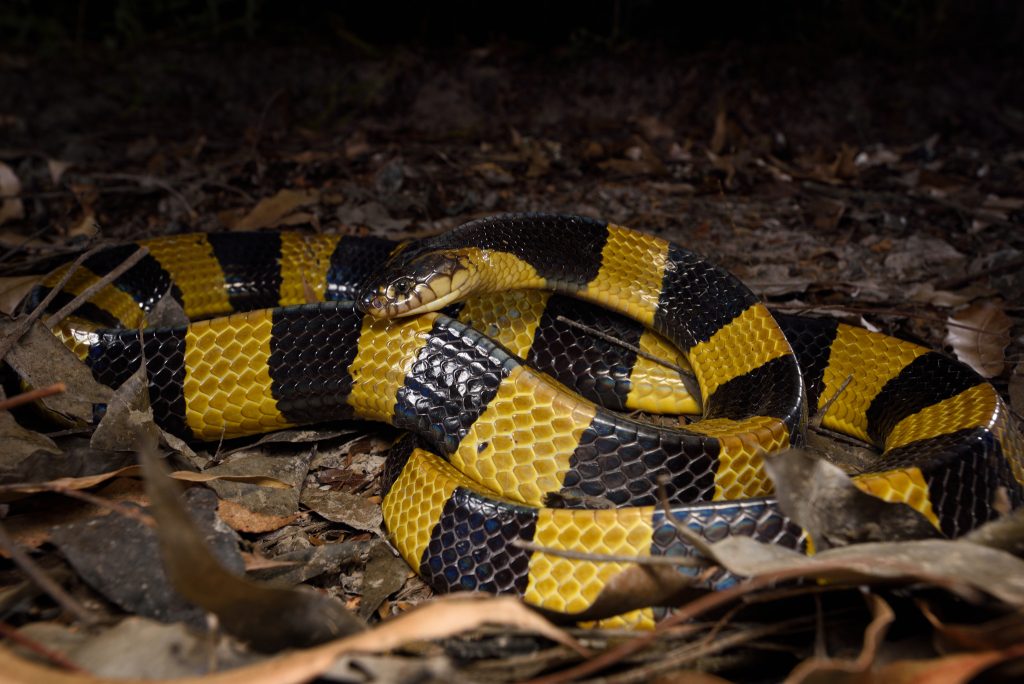
As per the National Guidelines of Snakebite Management in Nepal, snakebite is an important occupational hazard affecting farmers, plantation workers, herders and fishermen. Open-style habitation and the practice of sleeping on the floor also expose people to snakebites in Nepal, with children being at particularly high risk.
Snakebites in Nepal’s rural part are an important public health concern. The agriculturally prosperous Terai region with its hot climate, high seasonal rainfall, lush natural vegetation, high density of rodents, rich reptiles and amphibian flora makes an ideal habitat for the snakes.
The abundance of snakes and human activities, mainly agriculture, increases the human–snake encounters leading to snakebites in Nepal. Nocturnal snakebite is also common in Nepal due to the sleeping habit.
While there are many snake species causing snakebites in Nepal, the species in a group called kraits are more common. Let’s know more about them here today.
Snakebites in Nepal
Snakebite is a life-threatening medical emergency, more so because of a lack of skilled health workers and people’s dependence on traditional shamans (dhamis).
Further, doctors or health workers at the primary care level, as well as some of the district and provincial level hospitals, do not treat snakebites in Nepal, likely due to inadequate training on snakebite management during medical schools resulting in a lack of confidence in the management of snake envenoming.
Nepal records around 2,700 deaths of snakebites in Terai alone, before reaching to hospital. However, the WHO estimates around 20,000 yearly hospital admissions and 1,000 deaths caused by snakebites in Nepal. Snakebites are often added to the neglected list of Tropical diseases in Nepal.
According to The American Society of Tropical Medicine and Hygiene (2004), Nepal hosts nearly 89 species of snakes, out of which 17 are highly venomous snakes, and have front-fanged type of venom apparatus.
These snakes can be subdivided further into two groups: the family Elapidae and Viperidae. In the Elapidae family, two species, krait and cobra, are particularly common and dangerous. Today, we will talk about the kraits.
Understanding kraits

Kraits have very small fangs. Their bites often do not result in visible bite marks or bleeding wounds. However, this does not help to predict the severity of envenoming. In a krait bite, even if there is no visible bite mark and no health problem at all during the first few hours, it is still possible that life-threatening envenoming like respiratory paralysis may develop after up to 12 hours. Thus, all (suspected) snakebites should be observed in the hospital for 24 hours even if there are no signs of illness at the beginning.
Bungarus is a genus of venomous elapid snakes, the kraits. The genus Bungarus has 15 species recorded so far. Among 15 species of kraits, only six of them are found in Nepal—common kraits (Bungarus caeruleus), banded kraits (Bungarus fasicatus), greater black kraits (Bungarus niger), lesser black kraits ( Bungarus lividus), Himalayan kraits (Bungarus bungaroides) and wall’s kraits (bungarus walli).
Of them, common kraits are reportedly behind most snakebites in Nepal. They are more active at night and can climb and swim well. Typically, they bite sleeping people inside their homes. Envenoming by this species can cause death in a short time. In fatal cases, death occurrs within 12-24 hours. Bite cases of common kraits are mostly observed between June and November in the Terai region of Nepal.
Banded kraits being responsible for snakebites in Nepal is a rarity, but envenoming by this species is very dangerous and can result in death in a short time. It is both neurotoxic and myotoxic. The venom causes abdominal pain and progressive paralysis of the peripheral nervous systems, leading to respiratory paralysis and death due to asphyxia, renal failure and myoglobinuria.
Four other species are even rarer.
If bitten by a snake
Snakebite from any of the species of kraits is a medical emergency. Therefore, a quick clinical assessment should be done to decide if the patient needs immediate resuscitation or antivenom therapy. Snakebite survivors may arrive hospital late. They may therefore show early or late signs of envenoming and/or its complications.
Therefore, all snakebite patients must be assessed rapidly on arrival at the treatment centre. They may look moribund but maybe still salvageable by appropriate resuscitation. Rapid clinical assessment and resuscitation using ABCDE— airway, breathing, circulation, disability of the nervous system, exposure and environmental control— approach should be initiated.
Emergency management of respiratory depression (and shock) and timely administration of antivenom and assisted ventilation, if needed, are the next steps.




















